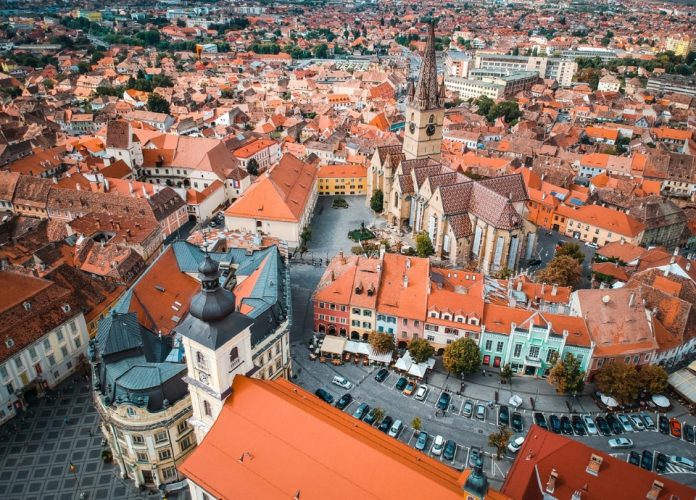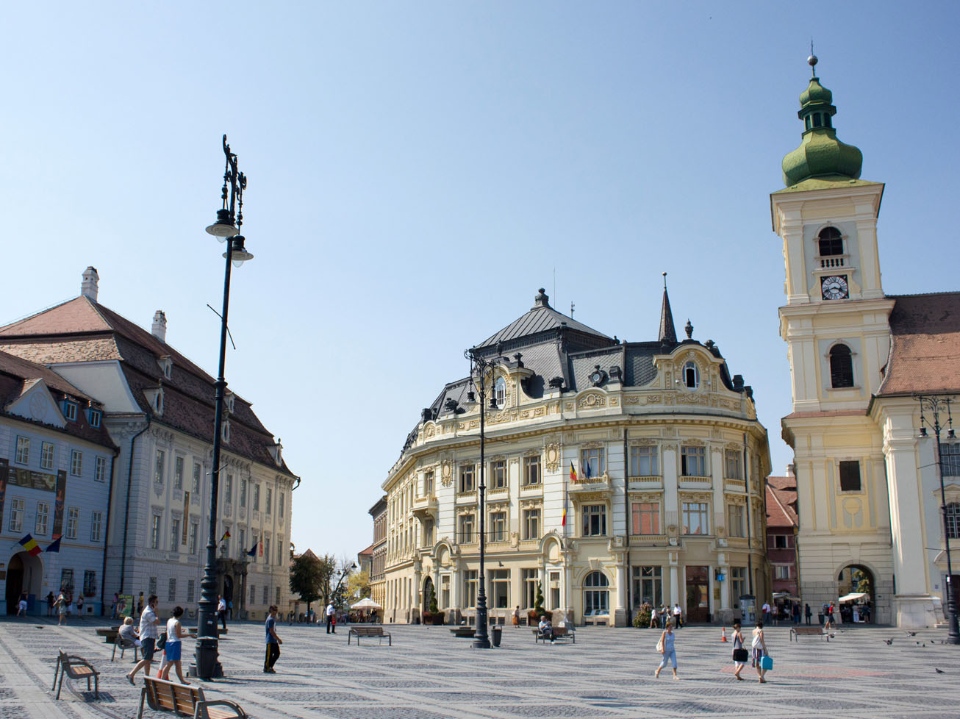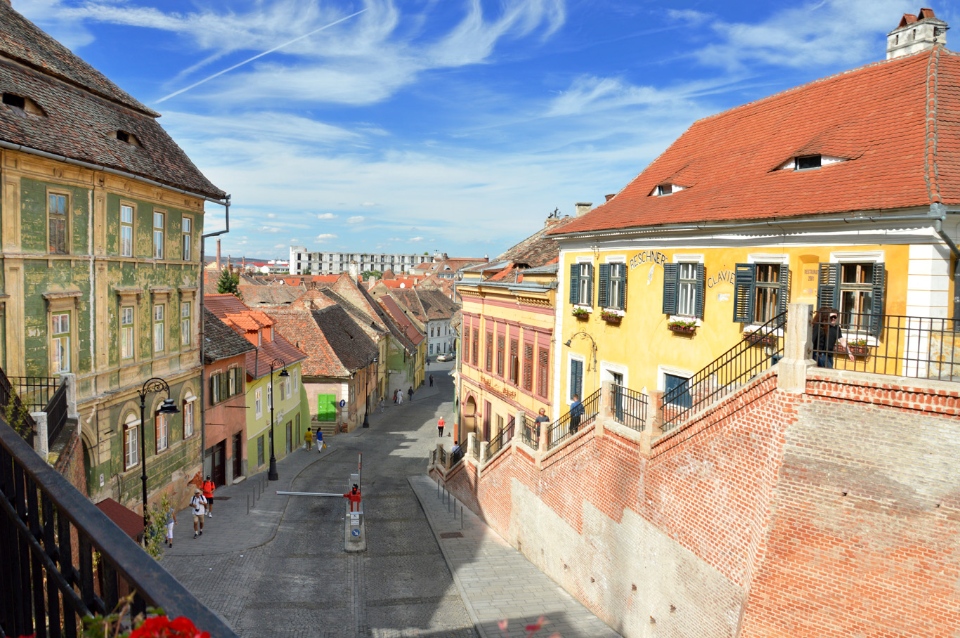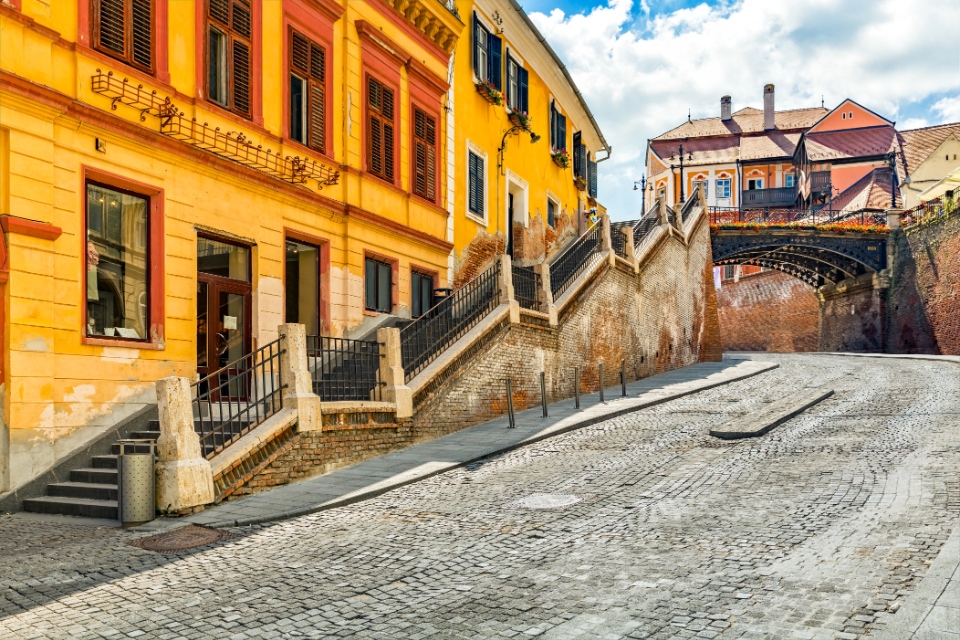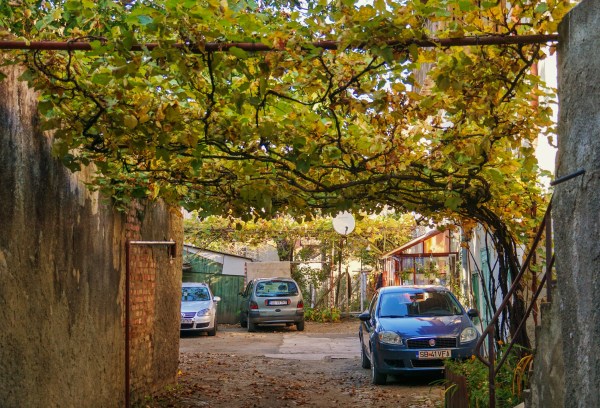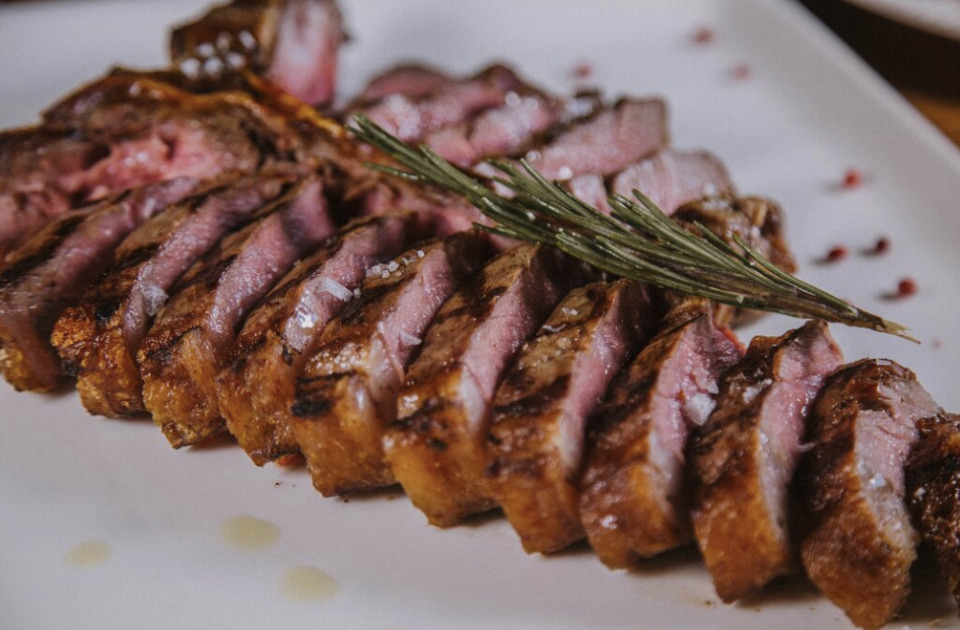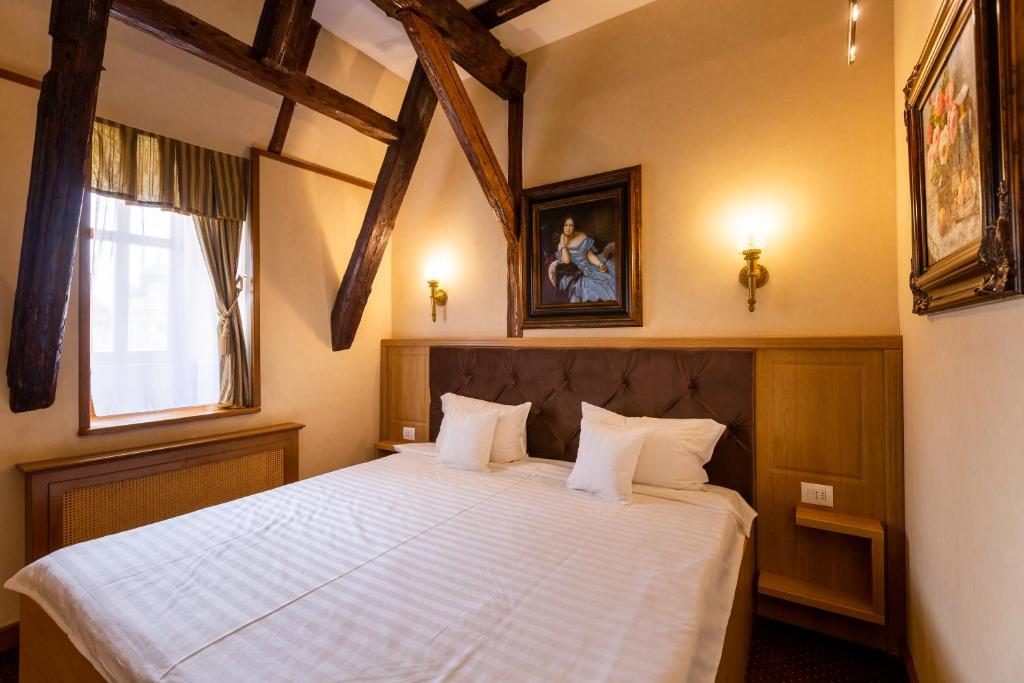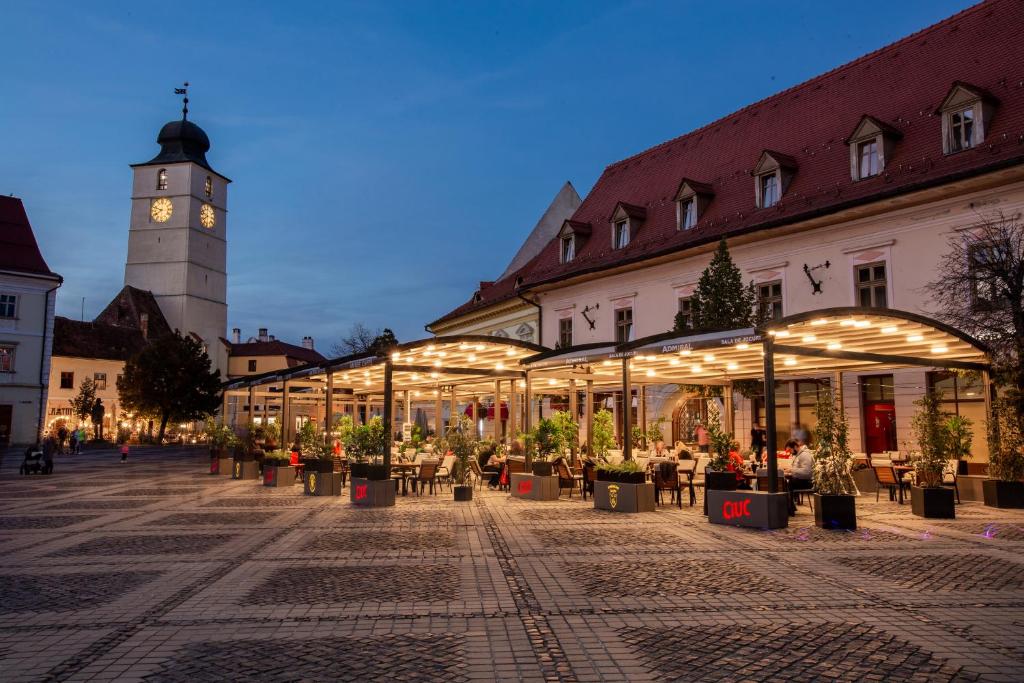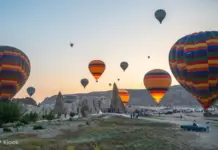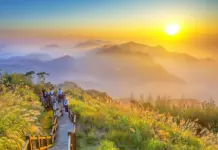The city of Sibiu is one of the most important cities of Transylvania region, the home of Count Dracula, a hotbed of Western culture and a region of Christian influence. So, is Sibiu, Transylvania worth visiting, what to do in Sibiu and how to plan a perfect budget trip to Sibiu, Romania for the first-time? Let’s check out our Sibiu blog (Sibiu travel blog) with the fullest Sibiu travel guide from how to get there, best time to come, where to stay, best places to visit, what and where to eat and top things to do in Sibiu to help you plan a smoothy trip to the ancient town of Romania!
- The ULTIMATE Uji travel guide: Top attractions, best things to do in Uji Kyoto, Tips & MORE
- Kyoto itinerary 5 days: How to spend 5 days in kyoto perfectly?
- Where to visit in Queenstown: 15 must see & best places to visit in Queenstown
- New York best museums: 15 most famous & must visit museums in New York
- Where to go in Chiayi? 15 must-go & best places to visit in Chiayi
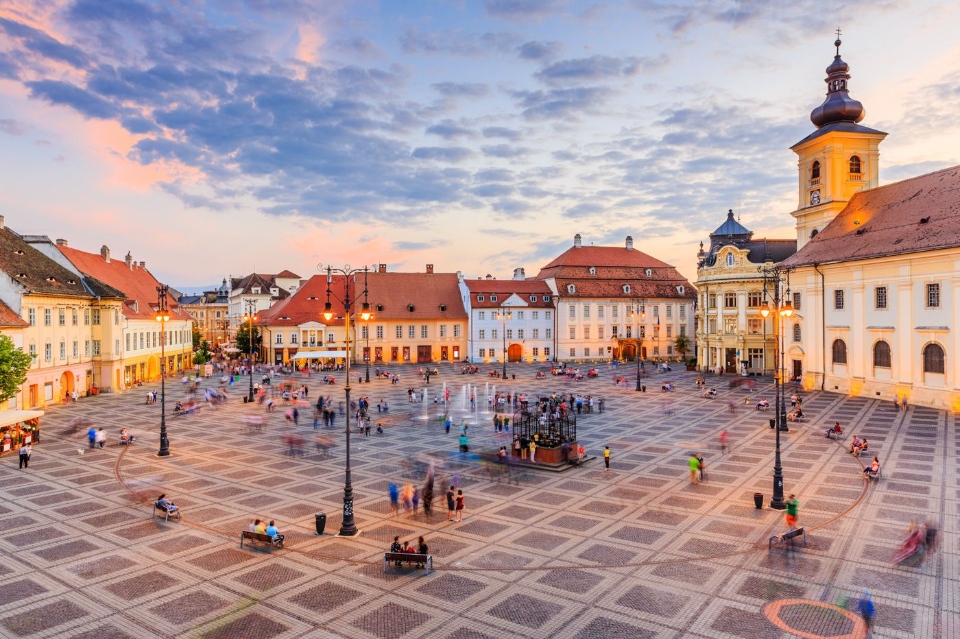


Sibiu blog: Overview of Sibiu
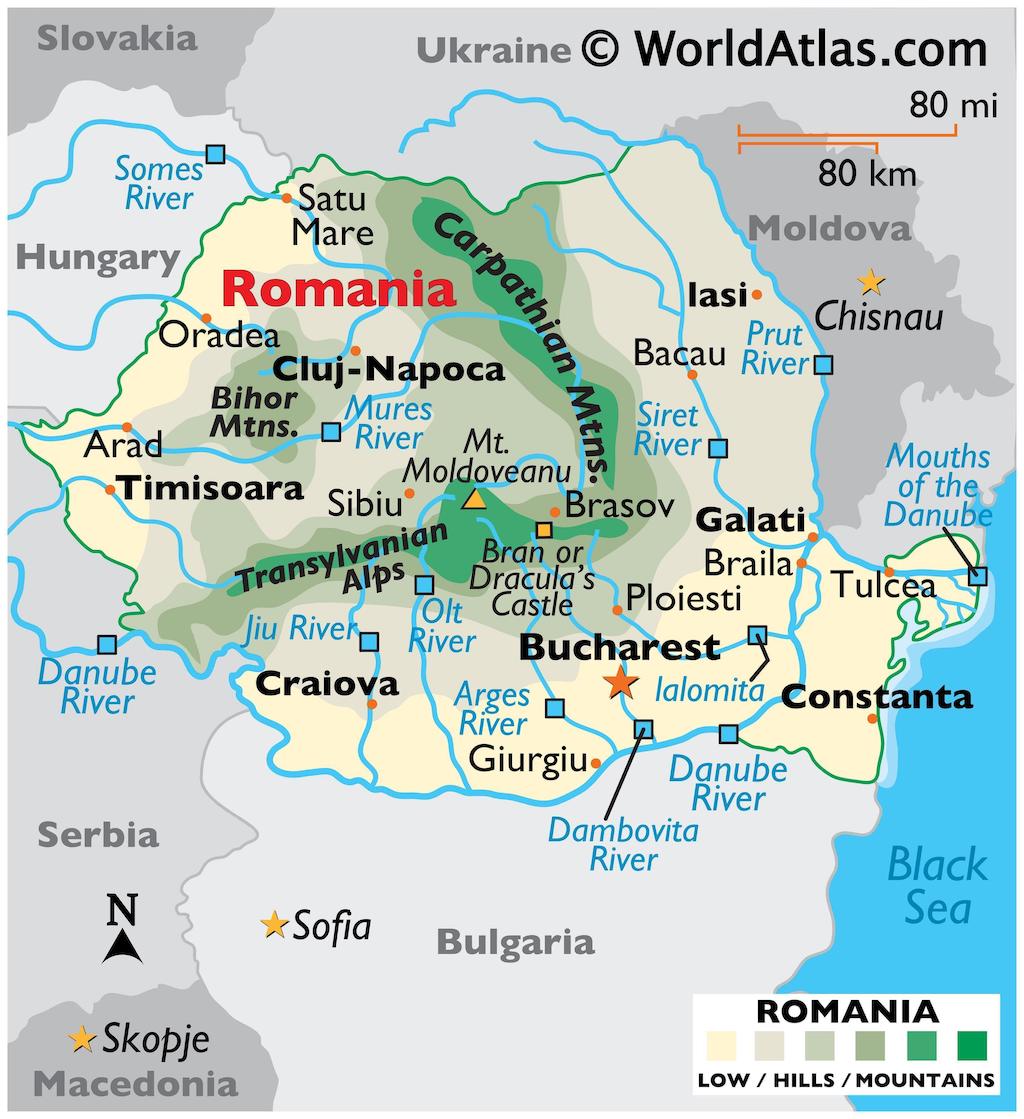
The Karpat Mountain Range (Carpathian Mountains) is the first natural fortress that creates the boundary between the East and the West. The Hungarian kings of the 12th century brought German (Saxon) immigrants to the Transylvanian plateau, located on the northwestern slopes of the Carpathians, granting them land to live and farm in return for their services to protect its border from many invasions of the Tatars, then the mighty Ottoman Empire.
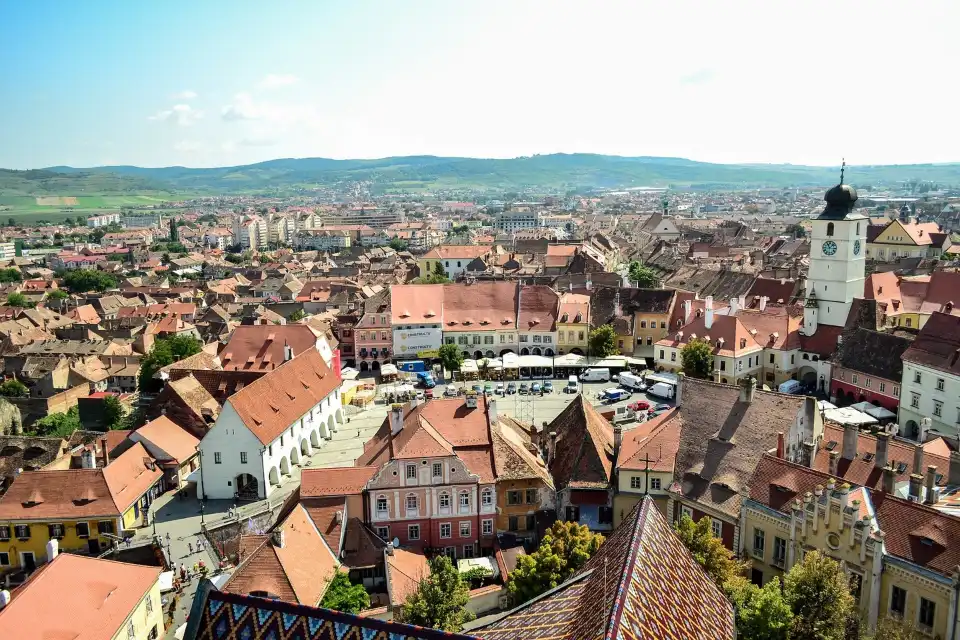

The people of German origin built the land of the Seven Forts – “Siebenbürgen”, the German name for the region of Transylvania, of which Sibiu was one of the most prosperous of the seven. They have preserved their culture and language for 8 centuries. It is estimated that today there are still around 80,000 German-speaking people in Romania, although most have returned to Germany since the second half of the 20th Century, because they are considered by the Federal Republic of Germany to be of German origin abroad – Volksdeutsche, even though it’s been eight centuries away from the motherland. The current President of Romania, Klaus Iohannis, the former mayor of Sibiu, is from this Community.
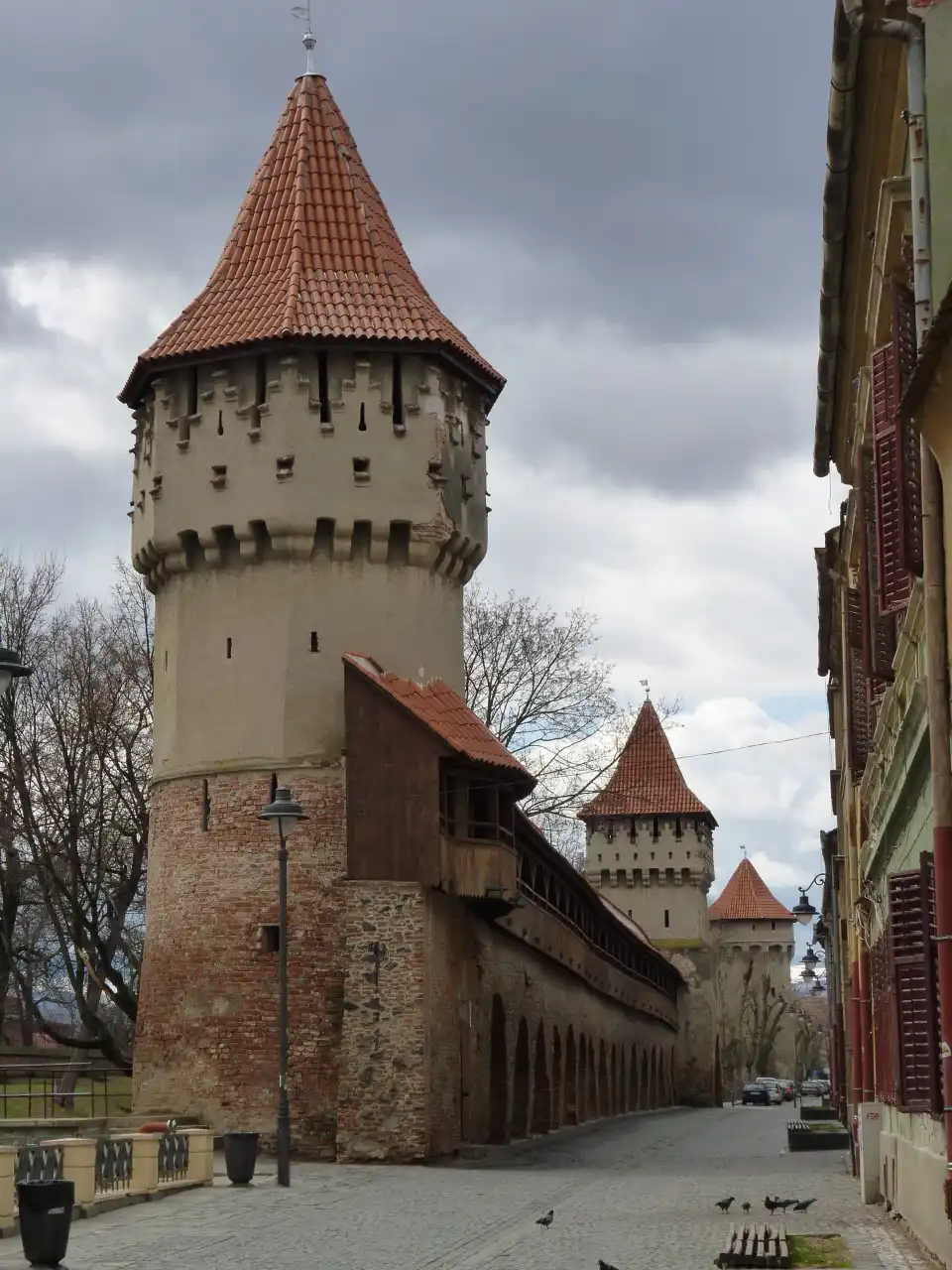

Ancient Sibiu was an important fortress built on a hill above the Cibin River. At present, traces of the upper town are still evident. Until the 18th century, only people of German origin were allowed to live in the upper town of Sibiu, which was located in the innermost part of the defensive wall. Sibiu in general and Transylvania in particular has a more developed economy than the rest of Romania, is a city that still retains the vestiges of its prosperous past, its ancient center intact, and its large cobblestone streets connecting the squares is wide, but not to the extent of the oversized Communist architecture. The mansions of aristocrats and old bourgeois houses are still preserved on the outside, but inside have been divided into collective zones for a long time.
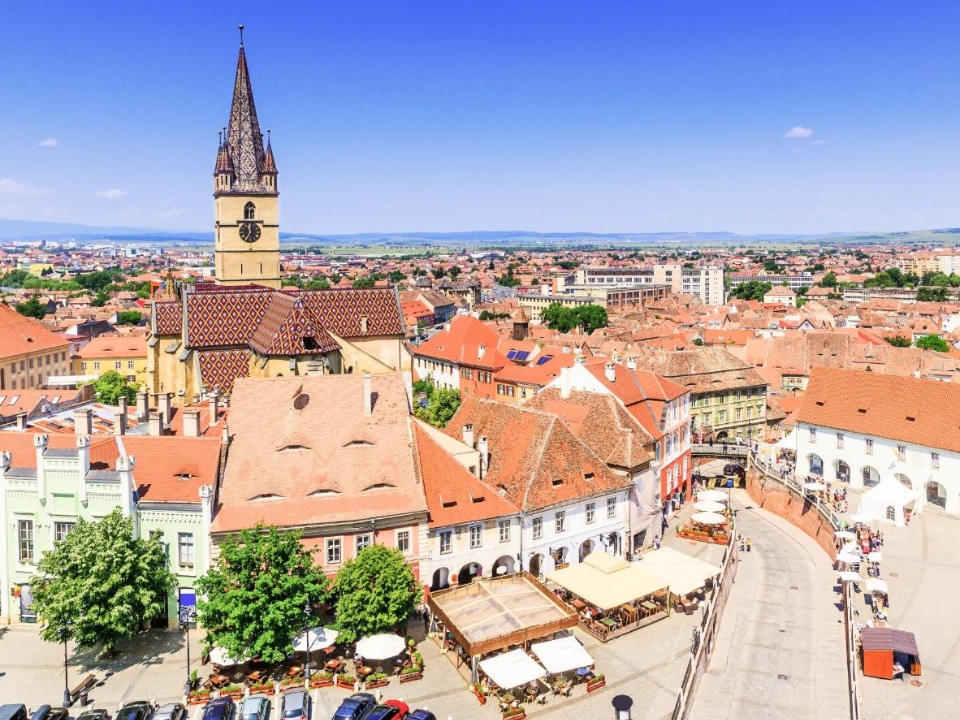
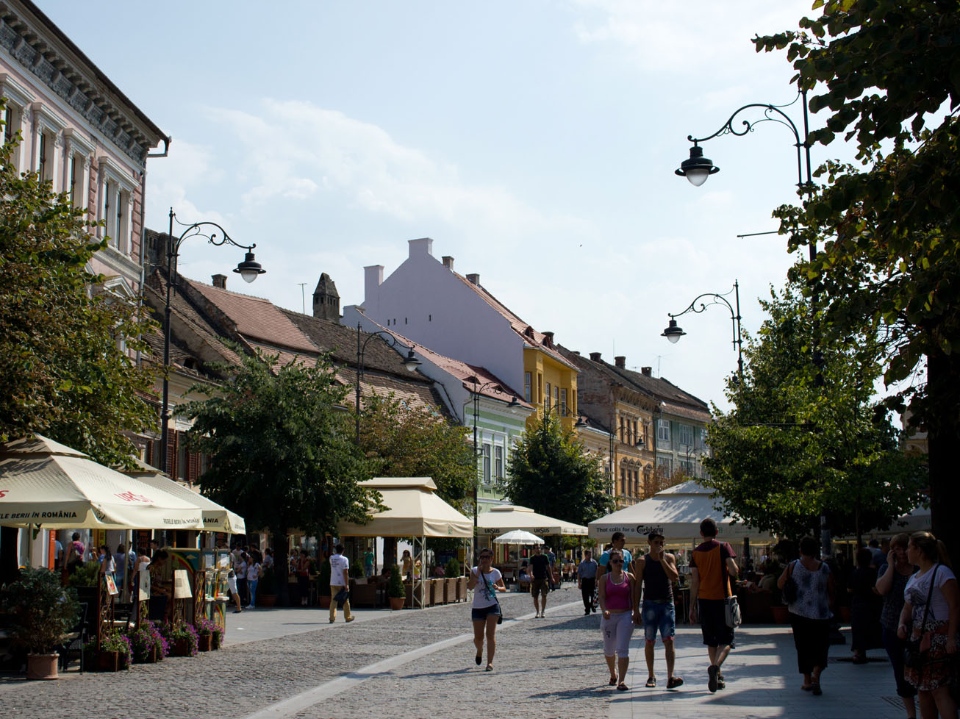
What I love most of Sibiu is that, the large gates of the old mansions are rarely locked. Stepping behind each door is a new journey, so many stories, so many lives. Life surrounds the courtyard of the old mansion, which is now the common courtyard of the dormitory.
We are like kittens, gently and curiously crept to explore that magical world. It is a game of hide and seek. We thought we were curious observers, but Sibiu is a city of houses with eyes. The houses in Sibiu, usually painted in elegant pastel colors, with their distinctive red tile roofs, with arches that resemble the eyes, are the ones who are always watching us.

Sibiu travel guide: Where to go, what to do in Sibiu & things to do in Sibiu
If you don’t have too much time, Sibiu is a destination that one can explore in one day. The best way to discover Sibiu is to take a stroll into the city’s most secret nooks and crannies. The attractions are located relatively close to each other, in the old center, and completely walkable from one to another.
As written above, ancient Sibiu was an important fortress built on a hill that reigned the Cibin River. Currently, the area worth visiting is the vestige of the upper town, which is still very well preserved. There is a legend that, because the leader of Sibiu during the Communist era, Nicu Ceaușescu, was the son of Romanian leader Nicolae Ceaușescu, the city was preserved relatively intact. Sibiu was out of the radar of the old Romanian General Architects, having demolished so many works they considered classic to replace them with modern buildings assembled like our dormitories. more suitable for the new life at that time.
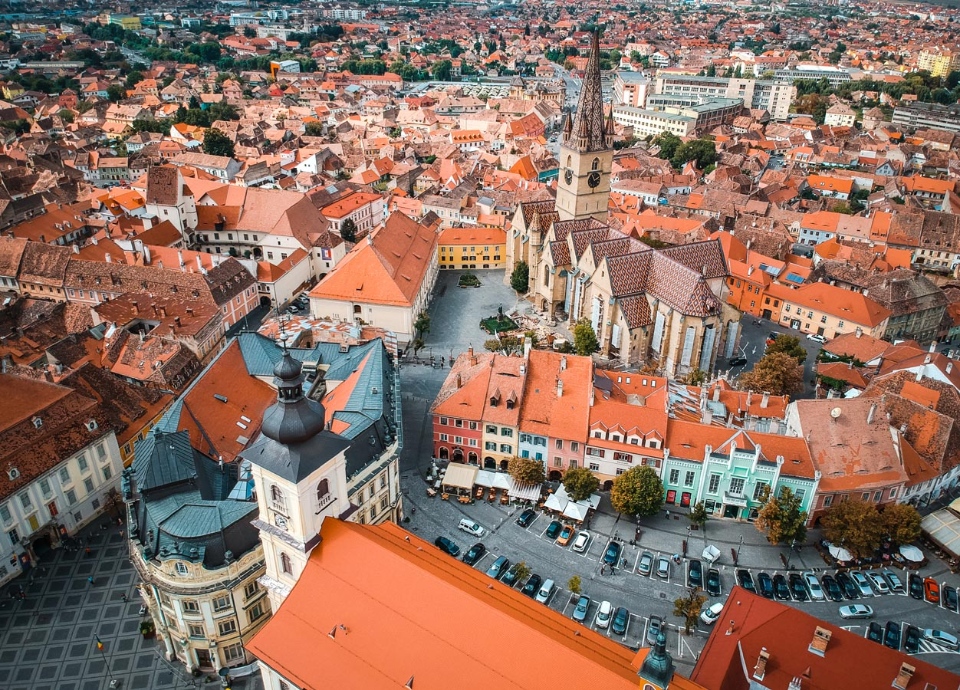
Sibiu in general and Transylvania in particular has a more developed economy than the rest of Romania, a city that still retains the vestiges of its prosperous past. Not much like a medieval city, Sibiu seems to be composed of large and relatively straight paved streets connecting wide squares. It’s also colourful, each house painted in a different light pastel shade, with large sloping tiled roofs. On the tiled roofs, you will immediately notice, the characteristic feature of this city…
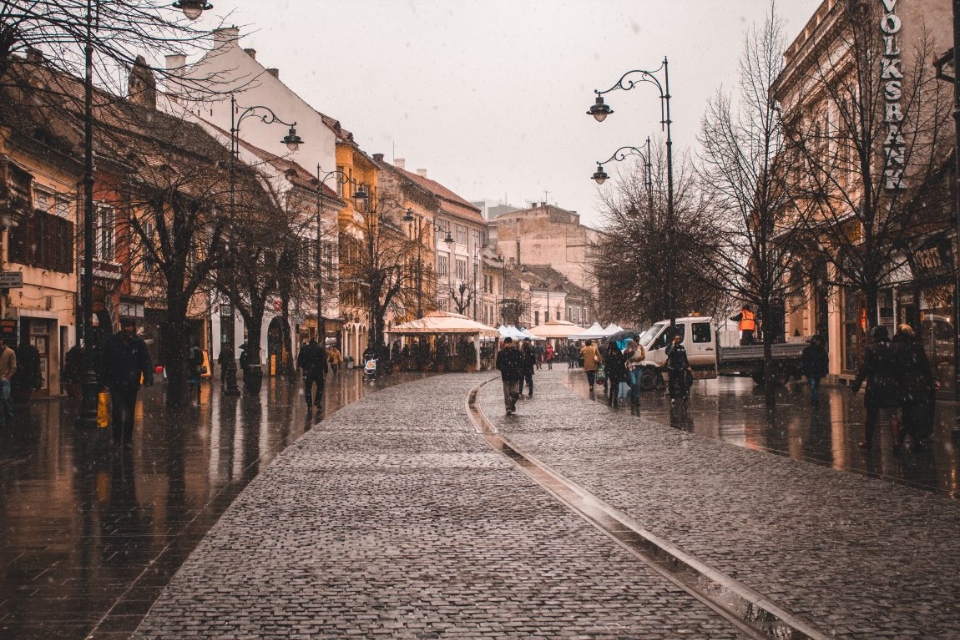
The eyes of Sibiu
Just a few seconds at Sibiu, you will have a rather interesting feeling that every step you take, like how many “eyes” are watching. Sibiu is known as the city of “eyes” houses. On sloping roofs, arches act as ventilation for buildings with distinctive shapes such as cute willow-shaped eyes. This architectural detail must have been invented here because it is not found in other cities. Many documents of this architecture date from the 15th century, although the remaining buildings in the city are mostly built in the 18th or 19th centuries.
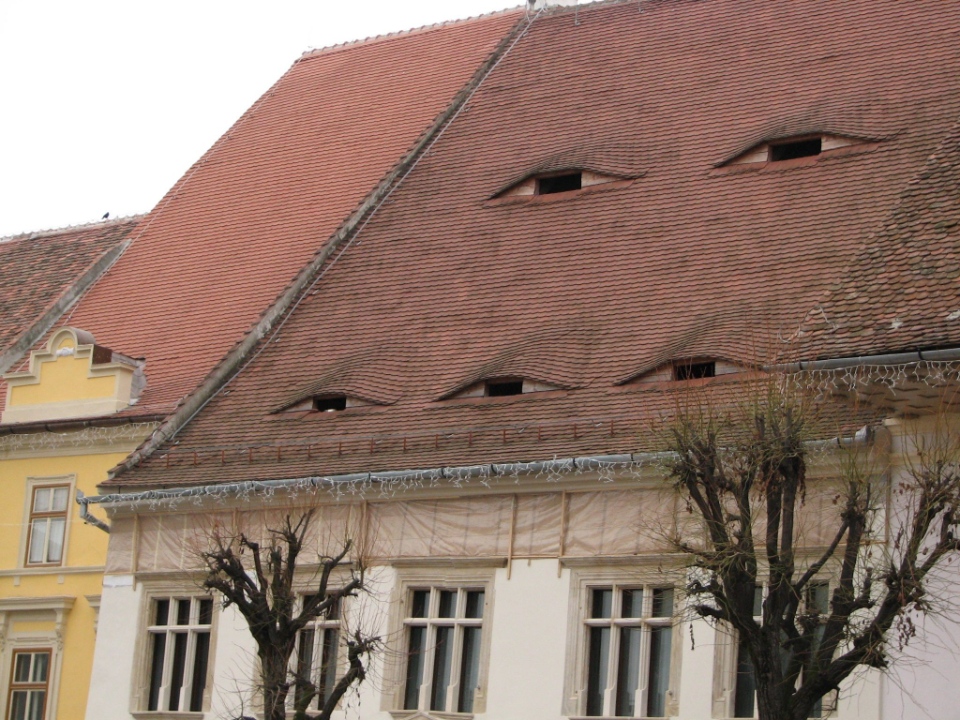

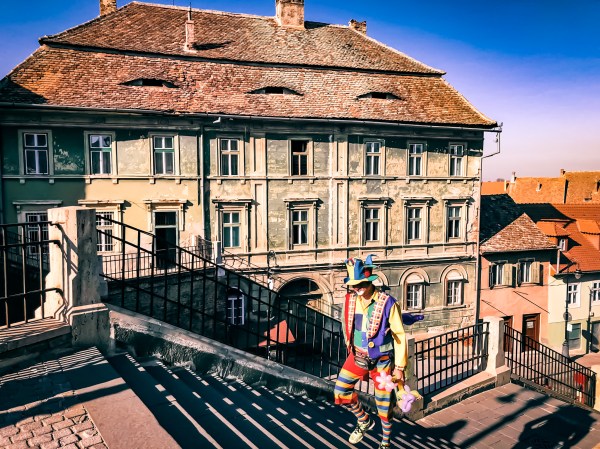
The heart of the city – Three big squares: Piața Mare – Piața Huet – Piața Mică
I have not studied the city’s planning as much as we know when it has been shaped, but Sibiu looks far from a city medieval. It is composed of large and relatively straight cobblestones streets that connect large squares. The navel of the city is Piața Mare (“Great Square”). A square that is actually three, just across a small street to two other main squares, Piața Huet and Piața Mică (“Small square”). Three squares are connected “each with their own look”, the most important buildings in the city also overlook these three squares. The center and largest is Piața Mare square, the most peaceful is Piața Huet square, the most fun is Piața Mică square on the day of the market. Three but one, one but three make up the heart of Sibiu, from here radiate the “blood vessels” of the city.




Sibiu – multicultural – multilingual – multi-religious city
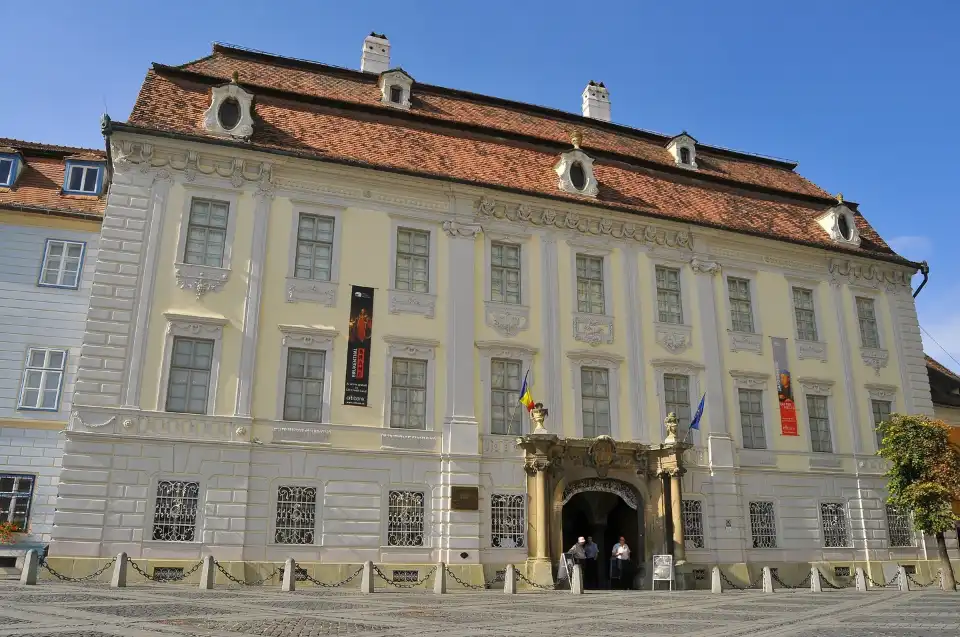
For nearly ten centuries, Sibiu has always been a land of cultural, linguistic and religious exchanges. People of German, Hungarian and Romanian descent have lived and built this land for so long. Standing looking at the city, it is easy to see three churches of the three major branches of Christianity separated within a circumference of a few hundred meters: Jesuit Church of the Holy Trinity – “Biserica Iezuiților” on Piața Mare square, has a peculiarity is that today, Mass is still celebrated in German; Protestant Church – “Biserica Evanghelică din Sibiu” overlooks Piața Huet square, if you have time, climb up the bell tower of the church, it is the most beautiful view of Sibiu; and also the Christian church – “Catedrala Sfânta Treime din Sibiu” on Strada Mitropoliei, all three of which are worth visiting in the old town.
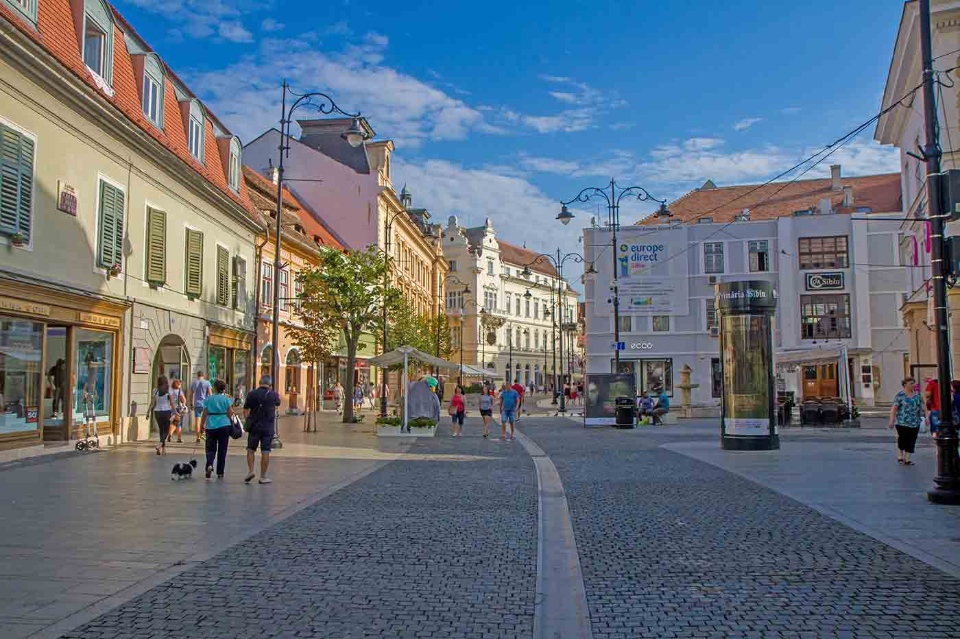
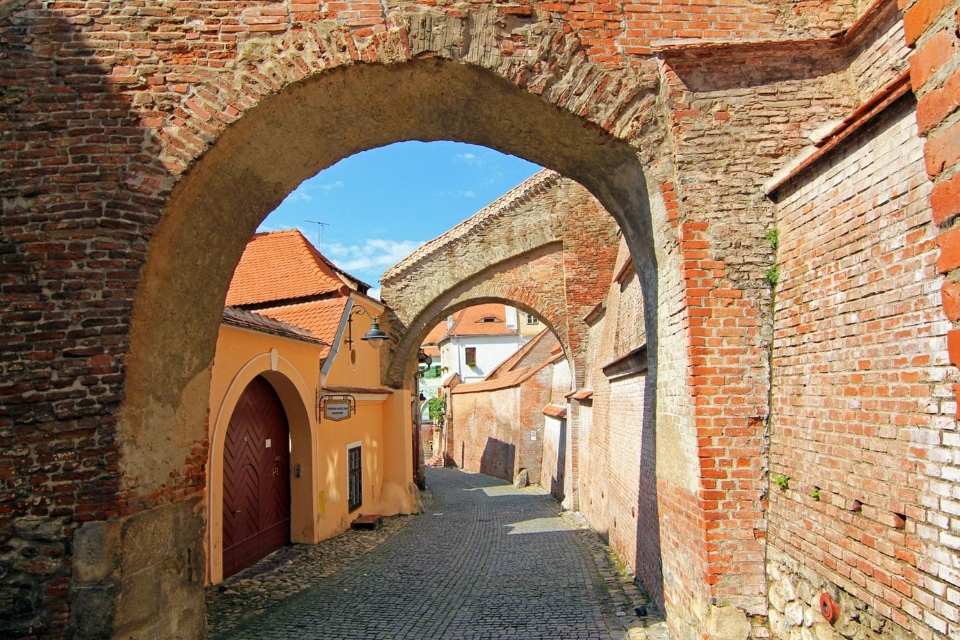

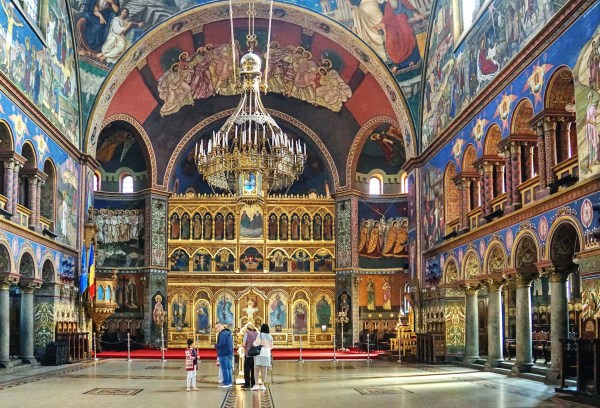
The bridge of “lies” – Podul Minciunilor
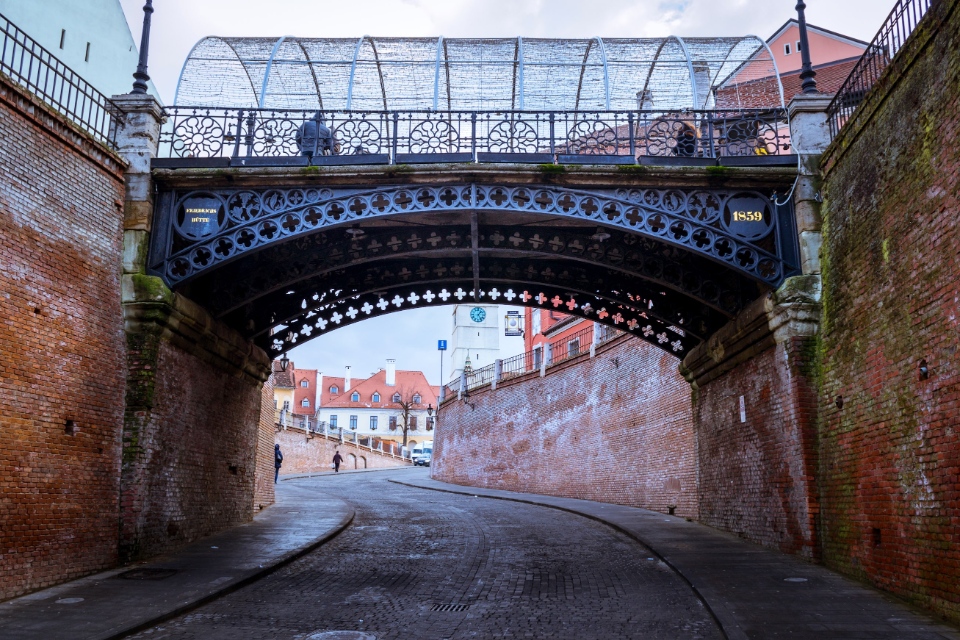
There is a very lovely thing of the city, the bridge of lies – Podul Minciunilor. Why does it have such an odd name? Because it is said that if you stand on the bridge and lie, the bridge will collapse. There is a story that when Sibiu was still a part of the Austro-Hungarian Empire, Austrian soldiers took advantage of this legend, bringing indigenous girls here to freely show ”their love”. Another story, when the dictator Nicolae Ceaușescu came to Sibiu, he also stood here and spoke to the entire city. So everyone is like that, everyone will have to go up the “lie bridge”, try to say something, it seems that everyone is telling the truth, because they have not seen it collapse, and everything is true but fake, fake but true isn’t it?
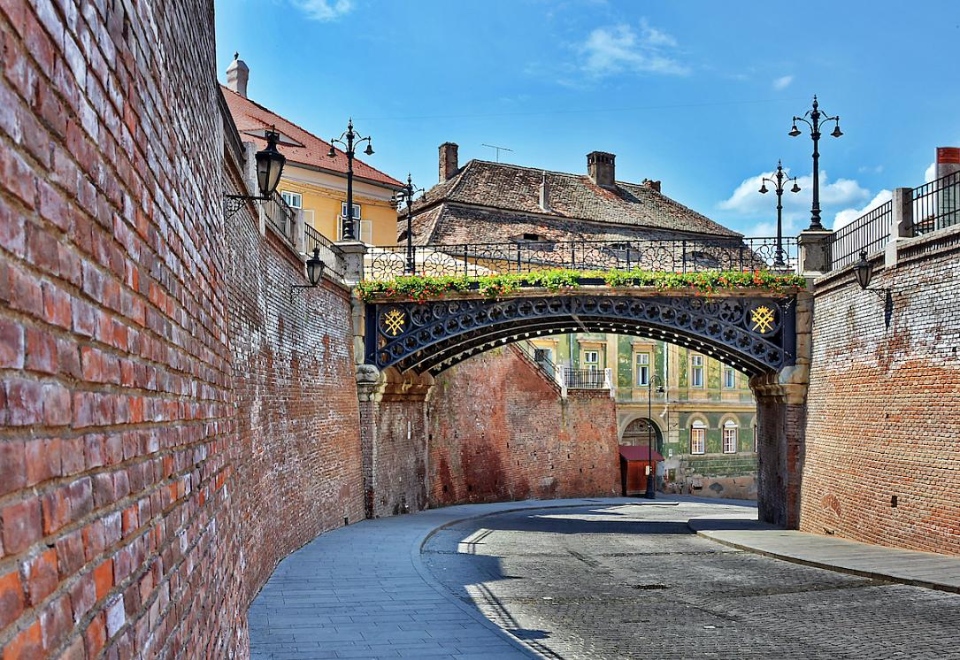
Turnul Sfatului Tower (#sibiu blog)
In addition to the Protestant church, you can also climb the Turnul Sfatului tower, located between the two squares Piața Mare and Piața Mică, to see the whole city and surrounding suburbs. The tower is open from 10am to 6pm. The very symbolic fare is 2 lei.

The roads to the upper citadel (#things to do in sibiu)
Sibiu has extremely romantic features, there are many roads, many stairs from the lower citadel to the upper citadel. Every road is small and beautiful. We went up here in the early morning dew, or when the steps were barely streaked with afternoon sun. The most photogenic can be mentioned Pasajul Piața Aurarilor on Piața Mică, Pasajul Scărilor or Strada Turnului go up to Piața Huet.
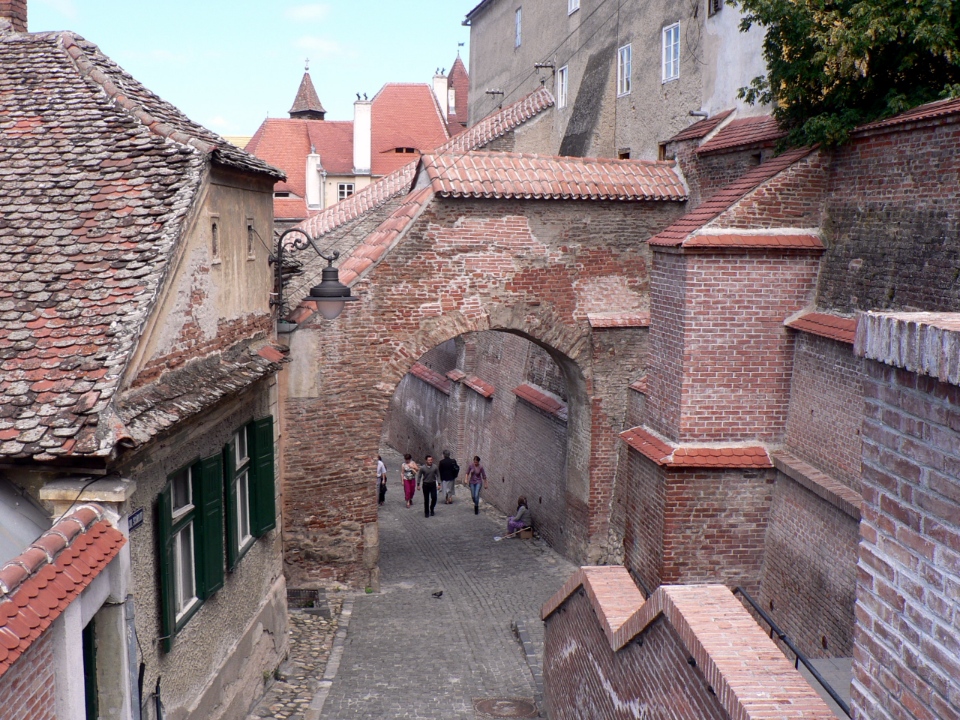
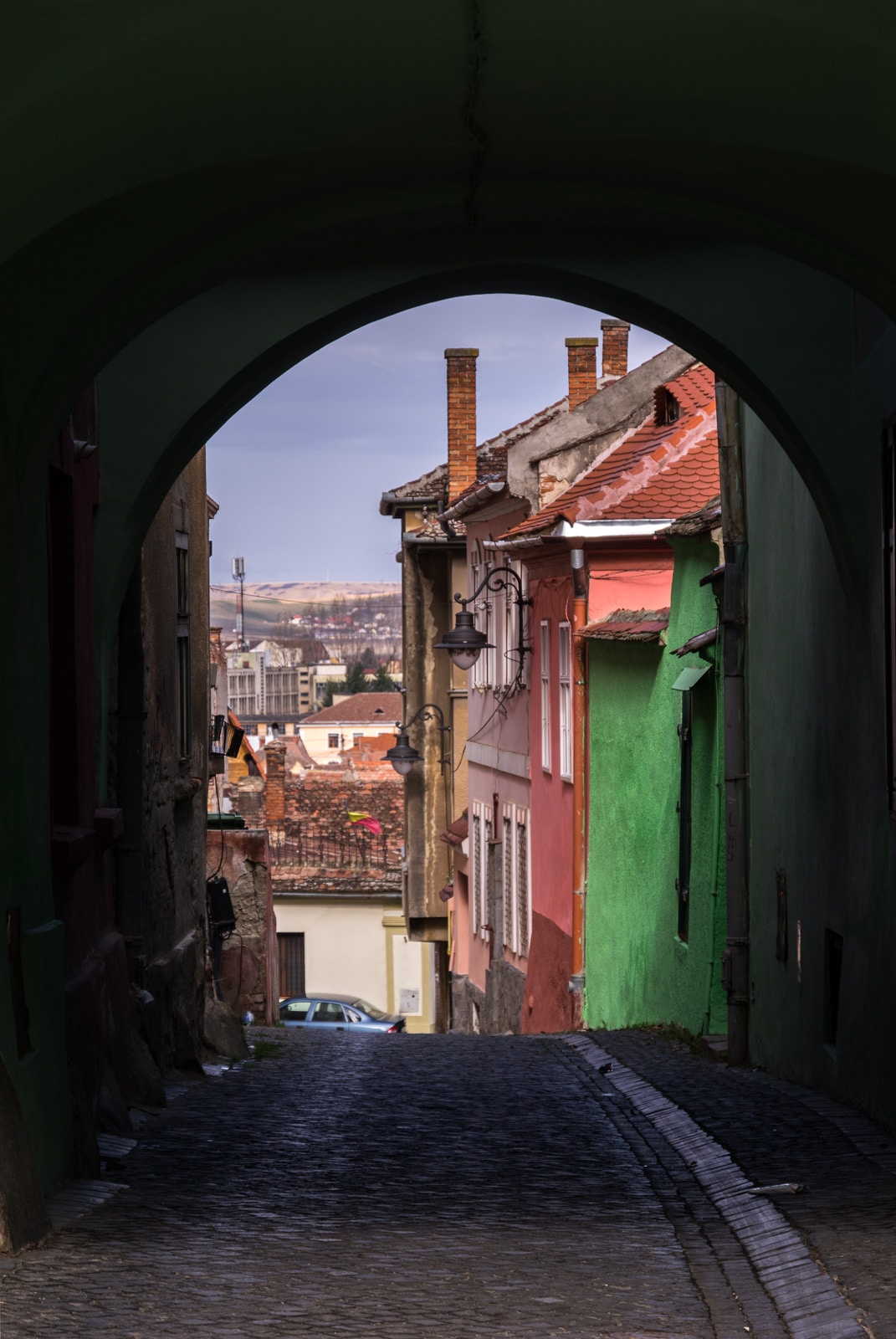
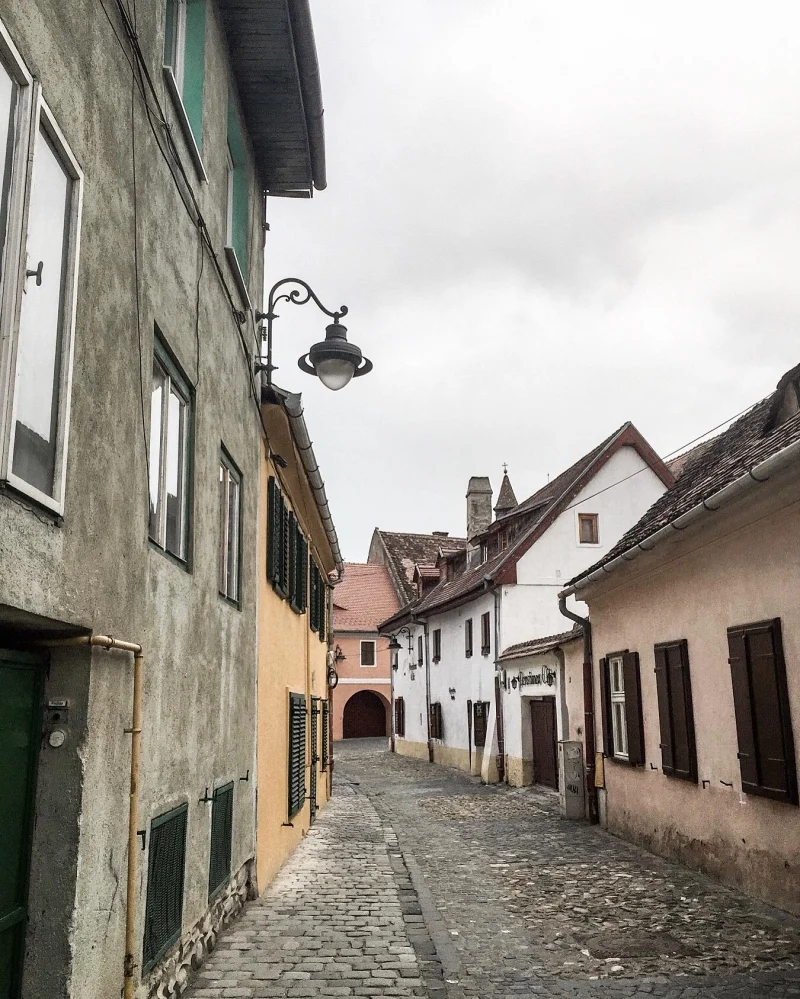
Remnants of the wall along Strada Cetății
Sibiu still preserves a large part of its old wall before urbanization, the most obvious part running along Strada Cetății street.

Sibiu behind the gates
There are actually two Sibiu cities, opposite in status, but perfectly complementing each other. Sibiu is not a quiet provincial city, it is a lively metropolis that attracts many tourists. The shops on the main street of Nicolae Bălcescu are always crowded with tourists. But just step beyond the gates, right on the same street, or anywhere, and you’ll discover a completely different Sibiu. The point that makes me fall in love with Sibiu is this.
As I have already written, Sibiu has preserved many of the old aristocratic and grand bourgeois residences. More precisely, the appearance is preserved. There is a point very close to our country, during the Communist period, the mansions were divided into collective areas long ago. The entrance gates to these “collections” were large gates, formerly probably the entrances for carriages, which are rarely locked today.
We will step into the corners of the yard and the sky as separate from the life on the street. Stepping behind each door is a new journey, so many stories, so many lives, every corner of the yard can tell so many memories. Life surrounds the courtyard of the old mansion, which is now the common courtyard of the dormitory. We are like kittens, gently and curiously crept to explore that magical world. It is a game of hide and seek. We thought we were curious observers, but it was the “Sibiu eyes” who were watching each of us every step of the way.
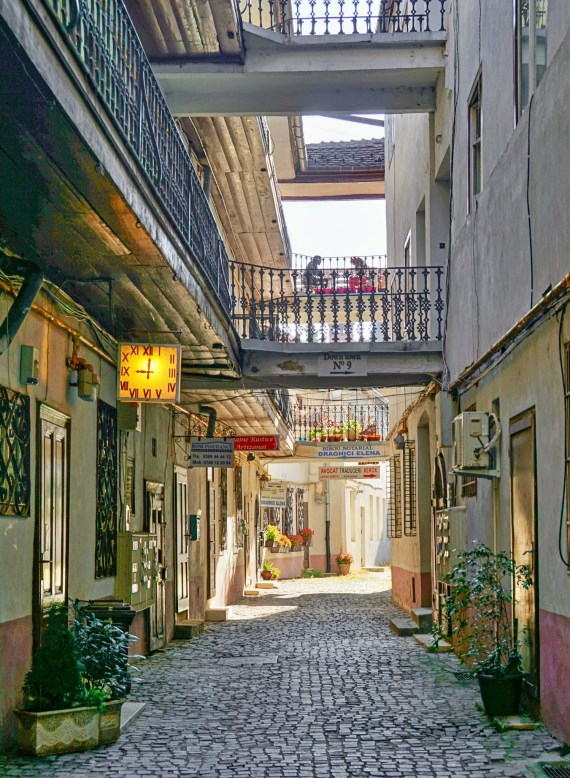
Sibiu travel guide: How to get to Sibiu?
By plane
Sibiu’s international airport (IATA code: SBZ), located close to the city, about 3 km from the center to the west. Taking a taxi from the airport to the city costs about 25 lei during the day or a little more expensive, about 30 lei at night (2021 price). There are relatively few direct international flights to Sibiu, mostly with German cities serving repatriated German-Romanians and operated by Wizz Air. Most still have to fly to Bucharest or Cluj-Napoca which is the main city of Transylvania and then come here by road.

By car
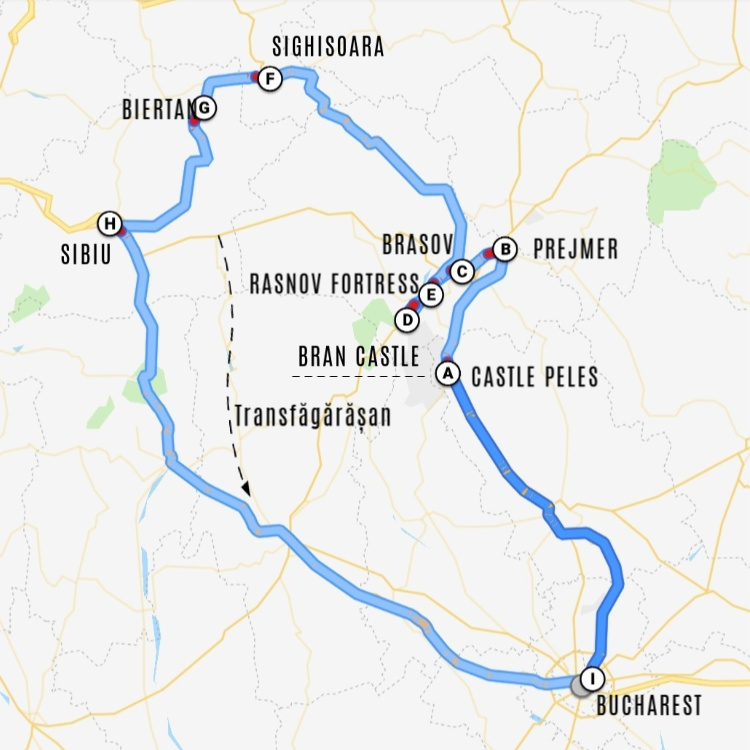
Drive in Romania, buy vignette (road tax) by year, so there are no more fees. From Bucharest to Sibiu or any other city in Transylvania, you have to cross the Carpathians mountains, so there is a part of the mountain road. From the capital to Sibiu, about 260 kilometers apart, it takes about 4-5 hours, depending on traffic congestion in Bucharest. Going to Pitești has a highway, then following the E81 national road is a two-lane road. The part through the mountain is the section that passes the Turnu Roșu pass, which is not very difficult to drive. Just have to be relatively careful because the Romanian drives quite fast and carelessly. Parking in Sibiu is not too difficult to find. The opposite direction to Cluj-Napoca, about 180 km from Sibiu takes about 2 hours by car.
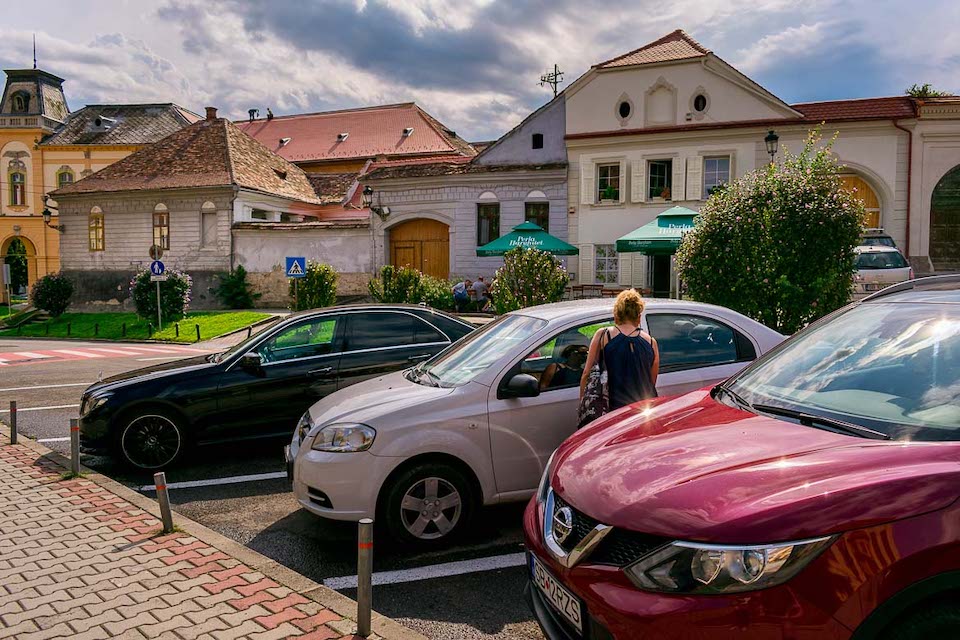
Car rental in Bucharest
During this trip, I found a small car rental company in Bucharest (because I had to change to a larger car at the last minute and the big companies ran out of cars) and was quite satisfied with their service. A very small firm called francrocar.ro has a large French clients. I find the service company very serious, committed to doing so, quickly delivering the car at the airport, they work in French and English very well.
By train
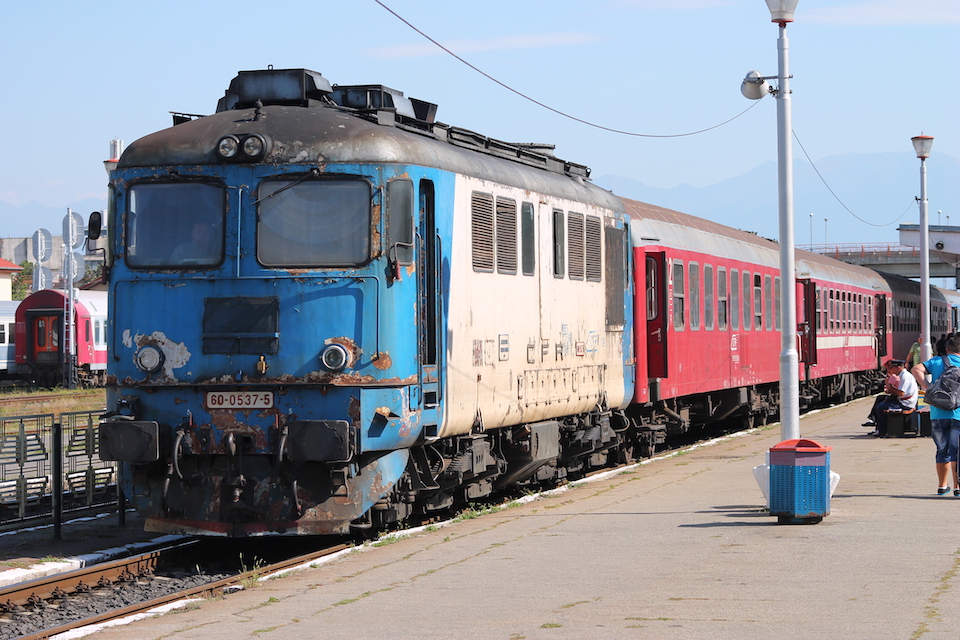
Romania’s national railway company, Căile Ferate Române – CFR (www.cfr.ro). Sibiu station is located on Piața 1 Decembrie 1918 square, walking distance to the city center. Since Sibiu is not on the main axis of the national railway line, taking the train is not necessarily faster than other means of transport and there are relatively few trips. There are only two daily connections between Sibiu and Bucharest. Referring to some forums, most of the comments said that the Romanian railway system is not new, but clean and quite on time.
By bus
The city’s main bus station is located next to the train station. Because the Romanian railway system is relatively old, most Romanian people choose to travel by bus. Almost every hour there is a bus from Sibiu to Bucharest (it takes 5 hours) or to Cluj-Napoca (takes 4 hours). Sharing the market share of domestic routes in Romania can be mentioned as Fany (www.fany.ro), Dacos (www.dacos.com.ro) or Transmixt (transmixt.ro). In Romania, to find long-distance bus timetables, or fares, you can use www.autogari.ro.
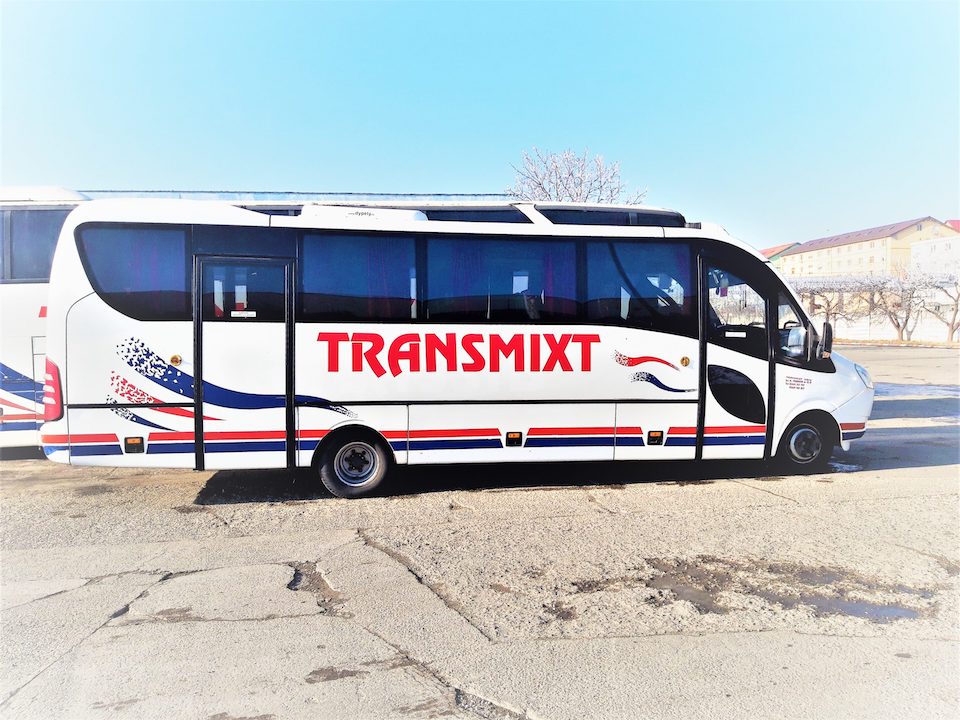
Money exchange: Romania does not use the euro (€) but uses the leu – the plural is lei (abbreviated as L or RON). The exchange rate fluctuates around 5 lei per €. For ease of calculation when purchasing, it is recommended to convert 1L to 0.2€. Exchanging money in big cities like Sibiu is relatively simple, almost all major banks’ branches offer euros at the same exchange rate. Only avoid exchanging at stations, bus stations or airports where the exchange rate will not be favorable. Should ask them first if they charge a service fee. For example, there is Raiffeisenbank, which originated in Austria and has a strong presence in Eastern Europe to exchange money.
Sibiu blog: What & where to eat
Benjamin Steakhouse & Bar
Address: Strada Alexandru Dimitrie Xenopol 1, Sibiu 550159, Romania
Hours: 10AM–12AM
Price: $$-$$$
Phone: +40 369 454 415
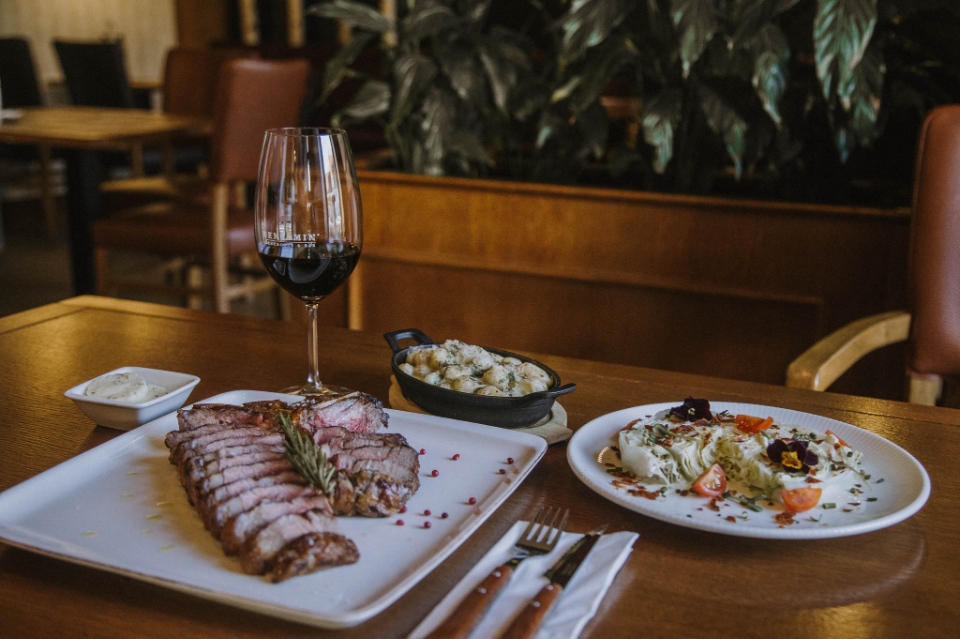
For a “steak” worshiper like me, it’s hard to resist the opportunity to enjoy a delicious piece of beef. Having a good steak is easy but difficult. The meat has to be delicious, the restaurant uses the famous Black Angus beef breed that is starting to graze on the Transylvanian savannah, couldn’t be more local, and the black cow breed for the fatty cuts of meat. Grilled at the right level, the steak at the restaurant is completely grilled with charcoal.
The one thing that can be improved may be that the accompanying sauce may not be quite to my personal taste. Taking advantage of the standard of living in Romania is still among the cheapest in the European Union, so although the space and service is quite sophisticated, ordering food is not cheap, the price is still acceptable. If including drinks, eat about 20€/person.
Sibiu travel guide: Where to stay
The Sisters Apartment: Different from the previous trip to Bulgaria two years ago. When we went to Romania this time, Airbnb was quite popular. The three-bedroom apartment we rented, managed by sisters Alexandra and Cristina, was clean and fully furnished by Western standards. Communicating with the sisters was easy and pleasant in English. The apartment is not in the central area, but not too far either. Since this trip is a road-trip by car, having a private parking space in the yard is a point worth emphasizing.
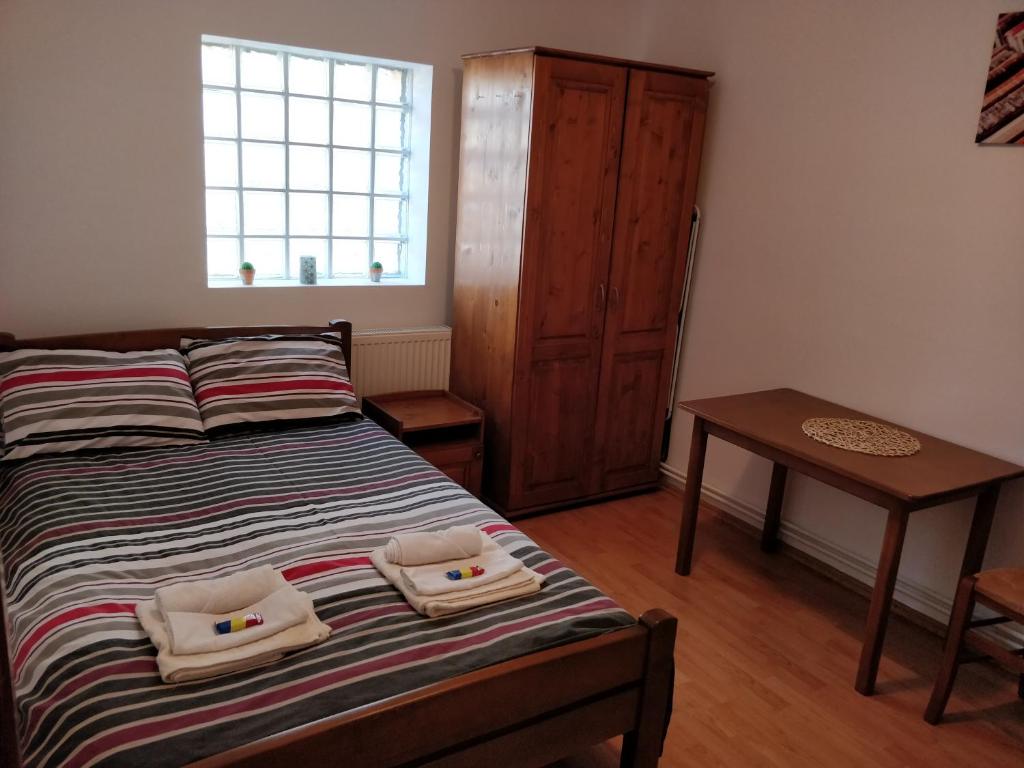
Below we recommend more best budget, mid-range and upscale hotels with good ratings and reviews you can refer to.
- Hilton Sibiu (Agoda, Booking)
- Hotel Continental (Agoda, Booking)
- MyContinental Sibiu (Agoda, Booking)
- Ramada Sibiu Hotel (Agoda, Booking)
- Am Ring Hotel (Agoda, Booking)
- Hotel Imparatul Romanilor (Agoda, Booking)
- ART Hotel (Agoda, Booking)
Check out more top and best hotels in Agoda.com or Booking.com
Itinerary to visit Transylvania
We visited Sibiu this time on a short 3 day roadtrip in the Transylvania region. The detailed itinerary is as follows:
- Day 1: Sibiu
- Day 2: Sighișoara – Brasov
- Day 3: On the way back to Bucharest, stop at Bran Castle and Peles Castle
Some best day tours, trips, activities and transfer services, tickets in, from and to Sibiu you can refer to
- Guided Walking Tour in Sibiu
- Private Biking Tour in Sibiu
- Bran Village and Brașov City Day Tour from Sibiu
- Dracula Castle and Brașov City Private Day Tour from Sibiu
- From Sibiu: Day Tour to Brasov and Dracula’s Castle
- Sibiu: City Sightseeing Tour
- Sibiu: Medieval City Exploration Game
- From Sibiu: Day Tour to Sighisoara
- Sibiu to Balea: Bus Transfer
- Sibiu: Surrounding Villages Guided Tour
- Cluj-Napoca: Day Trip in Saxon Wonderland
Read more about Europe travel guide here.































![10 best airports in Asia in 2016 [RANKED] kuala-lumpur-international-airport-best airports in asia in 2016 by skytrax ratings](https://livingnomads.com/wp-content/uploads/2016/08/29/kuala-lumpur-international-airport-best-airports-in-asia-in-2016-by-skytrax-ratings-218x150.jpg)








